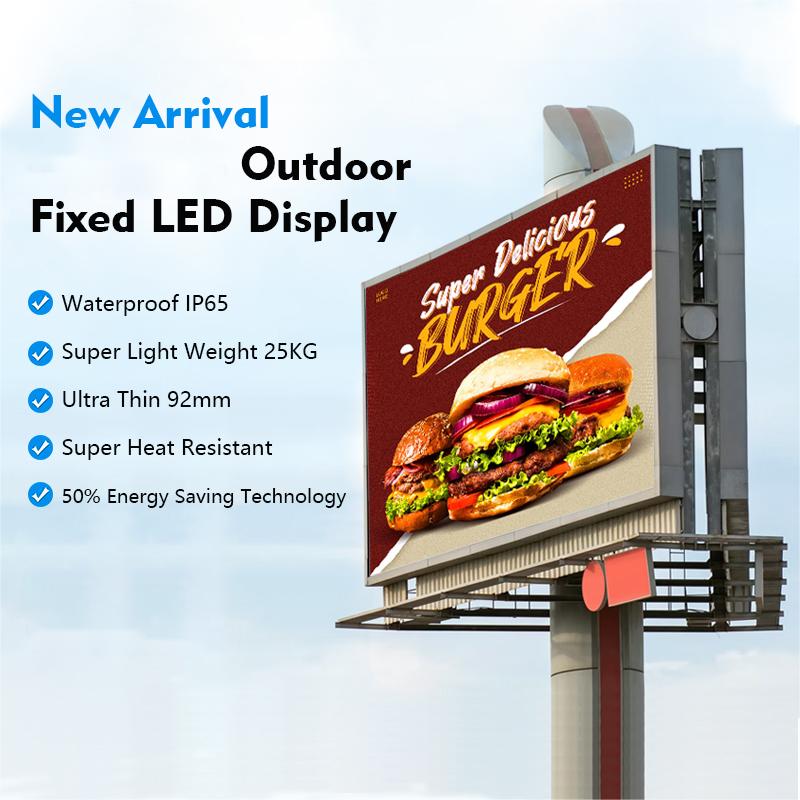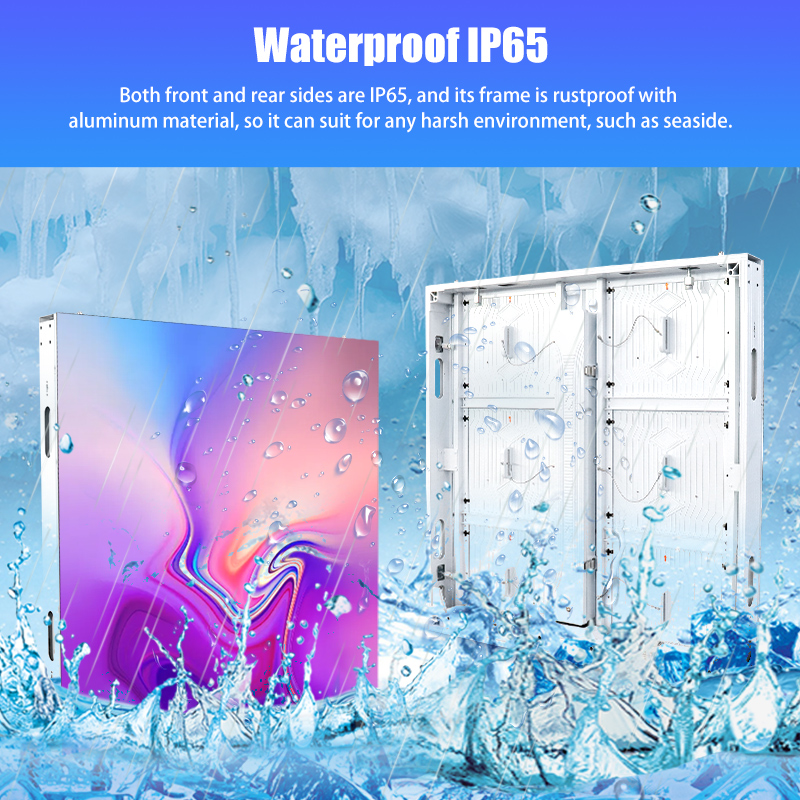LED Screen Repair Guide: Troubleshooting, Fixes, and Maintenance Tips
Common Signs of LED Screen Damage
Troubleshooting Your LED Screen
When to Contact Professional LED Screen Repair Services
Tips to Maintain LED Screens
In Conclusion
LED screens serve the vital task of delivering messages and sharing information through high-quality visuals. The attractive graphics and superior color make them perfect for commercial use on billboards and personal electronics like laptops and televisions.
However, like any other electronic, LED screens are prone to damage that undermines their functioning and quality. Detecting and rectifying the problem earlier will prevent further deterioration and high repair prices.
In this article, we explore common signs of a damaged LED screen, how to troubleshoot it, when to contact a professional, and maintenance tips
Common Signs of LED Screen Damage
A perfectly working LED screen delivers high-quality visuals at all times. Here are a few indicators that there is a problem with your screen.
Damaged Pixels
Have you ever noticed a black spot on your screen that doesn’t disappear? That’s one of the few signs of pixel damage in LED screens.
Using an LED screen with damaged pixels provides an unsatisfying experience, especially if color fidelity is crucial. They manifest themselves in two ways: stuck and dead. Stuck pixels don’t change color and remain red, green, or blue, while the latter means permanently off subpixels, making them black.
Dead pixels are the product of dead transistors, while a minor malfunction is the culprit for stuck pixels. You can fix this using a pixel-refreshing application that rapidly flashes color at the affected area to unstick the pixel. However, a screen change is usually the solution.
Discoloration
Discoloration is the deterioration of color fidelity in LED screens. It shows through distorted images and differences in color temperature and reproduction. For example, a white screen will suddenly start appearing yellow or cream.
Many things cause discoloration, including a manufacturing error. The others include physical damage to circuits, prolonged exposure to sunlight, and exposure to extreme temperatures. In such scenarios, the best you can do is use more screen light to avoid straining the eye.
Lines and Bars
Lines and bars running across your screen indicate LED screen damage. They run in various directions, horizontally, vertically, and diagonally, and will have different sizes and colors. The lines create an unsatisfying experience as it distorts the images.
The most common cause of lines and bars is a shattered screen and loose connectors caused by physical damage through impact or putting pressure on the screen. Other causes include using bad wires that disrupt image production.
Additionally, lines and bars could mean malfunctioning graphic cards. They are responsible for image rendering and will produce lines and bars when broken.
Flickering
Flickering in LED screens is a quick blinking or flashing of the light from the screen. The rapid on and off is annoying as you can’t figure out the image on the screen, and it will irritate the eye. The flashes are also dangerous for someone with epilepsy.
Most LED screen flickering cases are a product of faulty power cables. If the connection between the power source and the screen becomes slack, it will cause an unstable power supply, causing the flickering. A faulty power source can also similarly affect the screen.
Other causes of flickering in LED screens include a malfunctioning graphics card or a software error.
Burn-in/Ghosting
You may have encountered a screen with a picture, even when switched off. This occurs when a static image is left on the screen for a long time, making it burn into the screen. It is common on video walls, digital signage, and digital advertising boards where static images are prevalent.
Detecting burn-ins is as simple as changing the image on the screen. If the previous image persists, then you have a ghosting. However, the best way to detect mild burn-ins is by using a full screen image of a single color, white or gray.
Other ideal conditions for a burn-in include extreme temperatures, intense lighting, and substandard power supply. You can avoid them with shorter static image display time, lower brightness levels, and using dynamic material.
Troubleshooting Your LED Screen
Troubleshooting your LED screen could solve the problem or show you the potential problem.
Here are a few steps to follow to troubleshoot your screen.
1. Check all Cable Connections: Inspect all the cables connected to the LED screen for any issues or loose connections that can interfere with the display. It includes power cables and cables connected to the video source.
2. Power Cycle: Turn off the LED and unplug it from the power source. Wait a few minutes, plug it back and turn it on.
3. Try Different Inputs: Try to change the source of your video or try using a different cable. It will help you determine if the problem is the source or the screen. It also applies to your power outlet.
4. Adjust Display Settings: Check your LED screen display settings, such as brightness and resolution, and configure them to match the content you are displaying.
5. Check for Physical Damage: Inspect the LED screen for signs of physical damage and impact. Look out for cracks and broken pixels.
6. Update Software: If your LED screen uses software or firmware, checking for updates and updating it could solve your problem.
7. Check for Overheating: LED screens sometimes overheat, causing it to malfunction. Ensure that the area around the screen is well-ventilated and that cooling fans are functional
When to Contact Professional LED Screen Repair Services
Trying a DIY fix on your LED screen could prove more harmful and costly. You could easily damage another part, which could mean spending more on repairs. Here are indicators that you need an expert for your LED repairs.
- If troubleshooting the screen bears no fruit
- When the screen is extensively damaged, like cracks
- If handling the screen could risk your safety
It is also crucial to contact the manufacturer if you have a valid warranty. They’ll easily rectify the problem or replace the screen if you meet all terms and conditions. One of the conditions is not having tried to repair the screen yourself or using a third party.
Tips to Maintain LED Screens
Maintaining your LED screen helps you maintain its performance and serve you for a long time. Here are tips to help maintain LED screens.
1. Regularly clean the surface using a dry cloth or follow the manufacturer’s guidelines Schedule visual inspections of every part of the screen and cords
2. Keep all the firmware up to date
3. Always ensure the screen is connected to a stable power supply
4. Use the screen in an environment with the recommended operating temperature
5. Set the display settings to fit the type of visuals
6. Use dust and moisture covers during storage to prevent dust and moisture accumulating of the screen
7. Don’t store the LED for long without turning it on from maintenance
8. Protect the screen from harsh elements like rain and snow when in use outdoors
9. Ensure all the LED operators and handlers have gone through the usage manual and understand it
In Conclusion
Good maintenance is the key to reducing repair costs and prolonging the service life of your LED screen. Handle the screen with care, shield it from harmful elements, and provide the perfect conditions. You must also quickly spot any signs of damage and malfunction and troubleshoot it to find the problem. However, if the problem persists, immediately contact an LED screen repair expert to solve the problem.
Post time: Apr-15-2024



